Abstract
Three thermophilic cellulolytic fungi, Chaetomium thermophile var. coprophile, Sporotrichum thermophile, and Thermoascus aurantiacus were studied to determine the conditions for a high rate of cellulose degradation. The range of temperature over which good growth occurred was determined first in a temperature gradient incubator; the optimum temperature was then established in shake flask cultures. T. aurantiacus had the highest optimum growth temperature range (46 to 51 C), whereas S. thermophile had the broadest range over which good growth occurred (36 to 43 C). Optimum temperatures for the three organisms, T. aurantiacus, S. Thermophile, and C. thermophile were 48, 40, and 40 C, respectively. It was found that the addition of an organic carbon and nitrogen source to a cellulose mineral solution medium markedly increased the rate of cellulose degradation. The surfactant, Tween 80, which has been reported to be of value in the production and recovery of the enzyme, cellulase, was shown to be detrimental to the degradation of cellulose in culture. In the medium used, S. thermophile gave the highest rate of substrate utilization; 56% of the cellulose was hydrolyzed in 72 h. The average degree of polymerization of cellulose decreased from 745 to 575.
Full text
PDF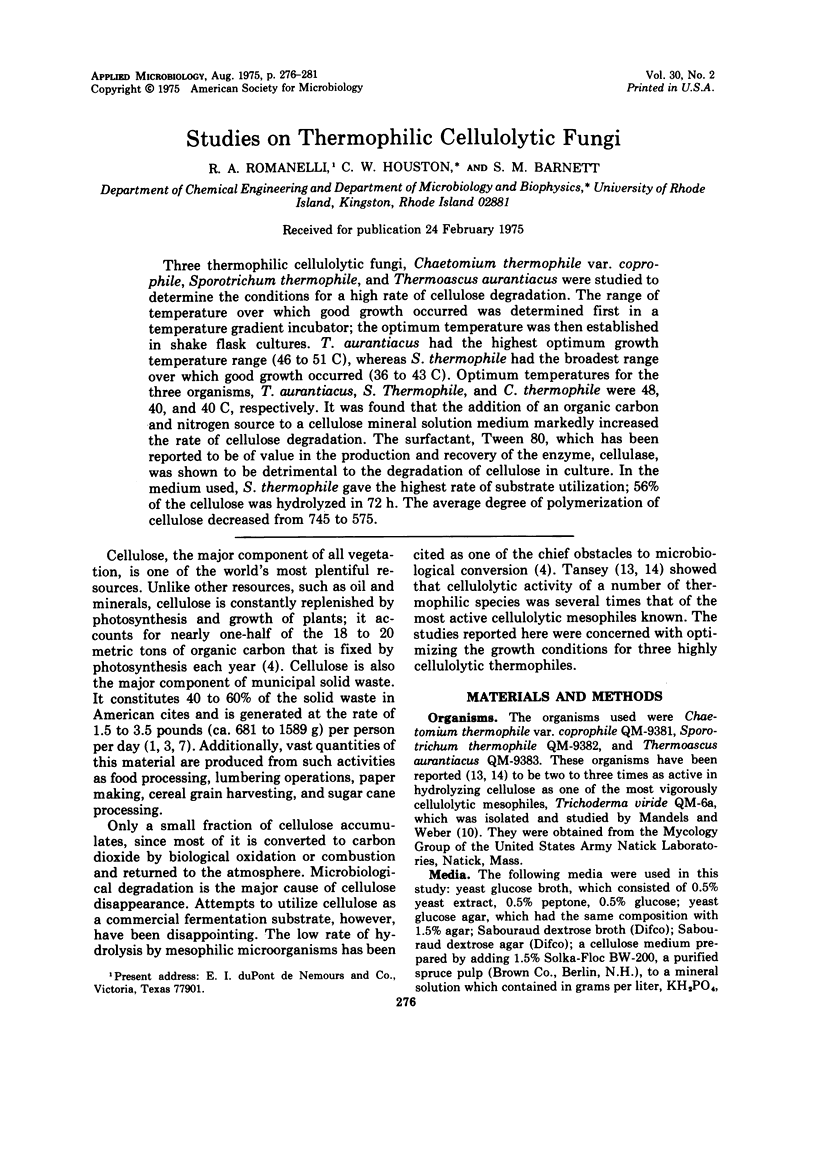
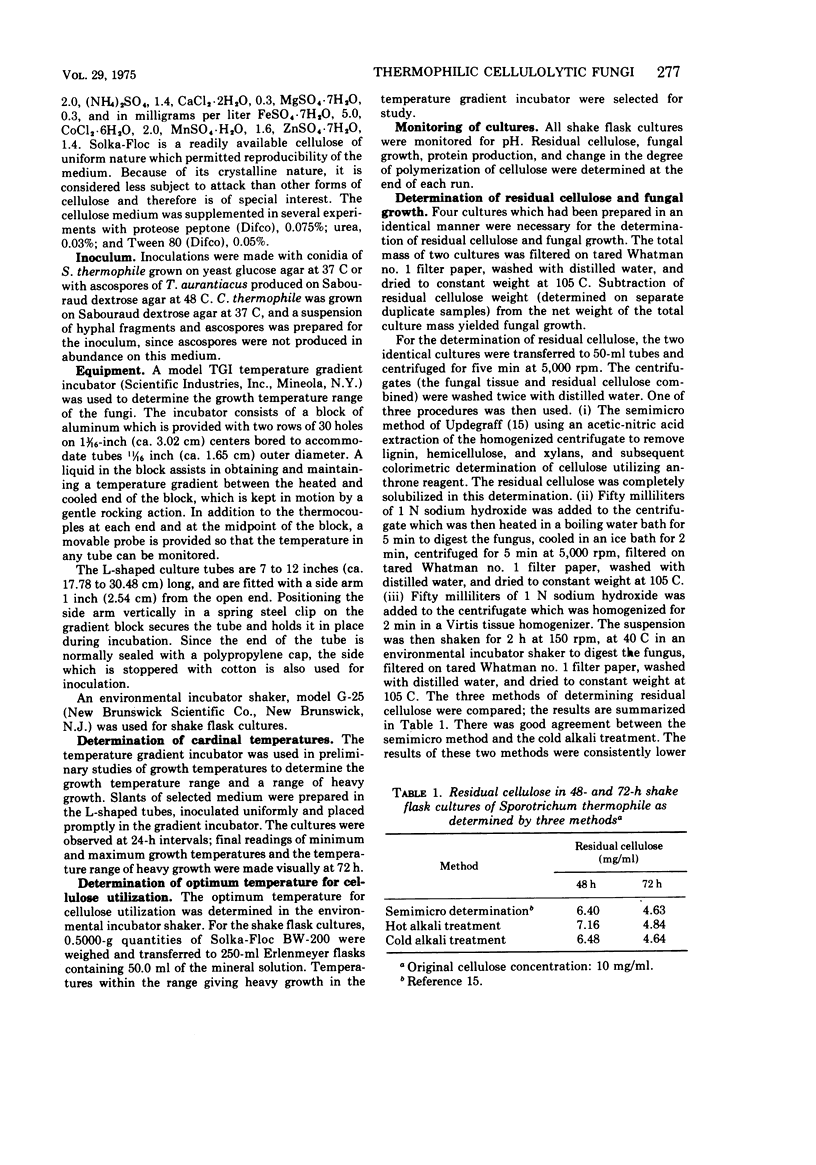
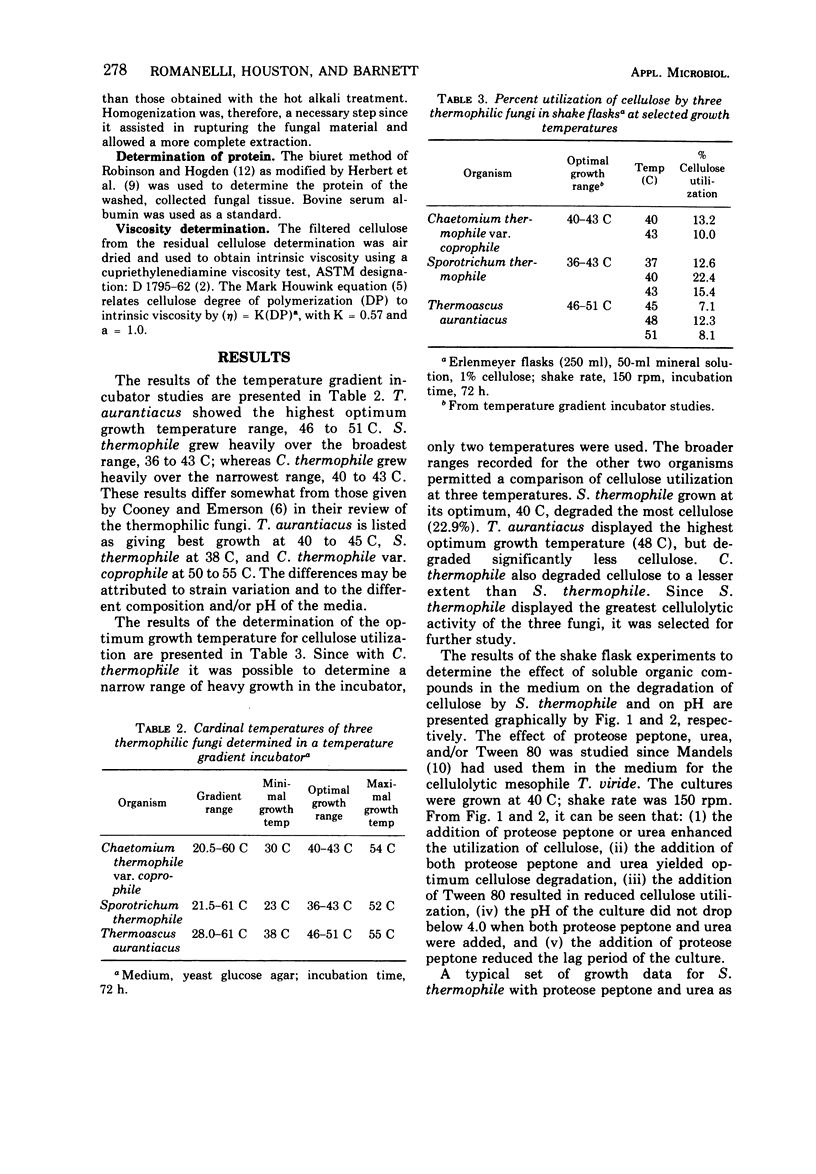
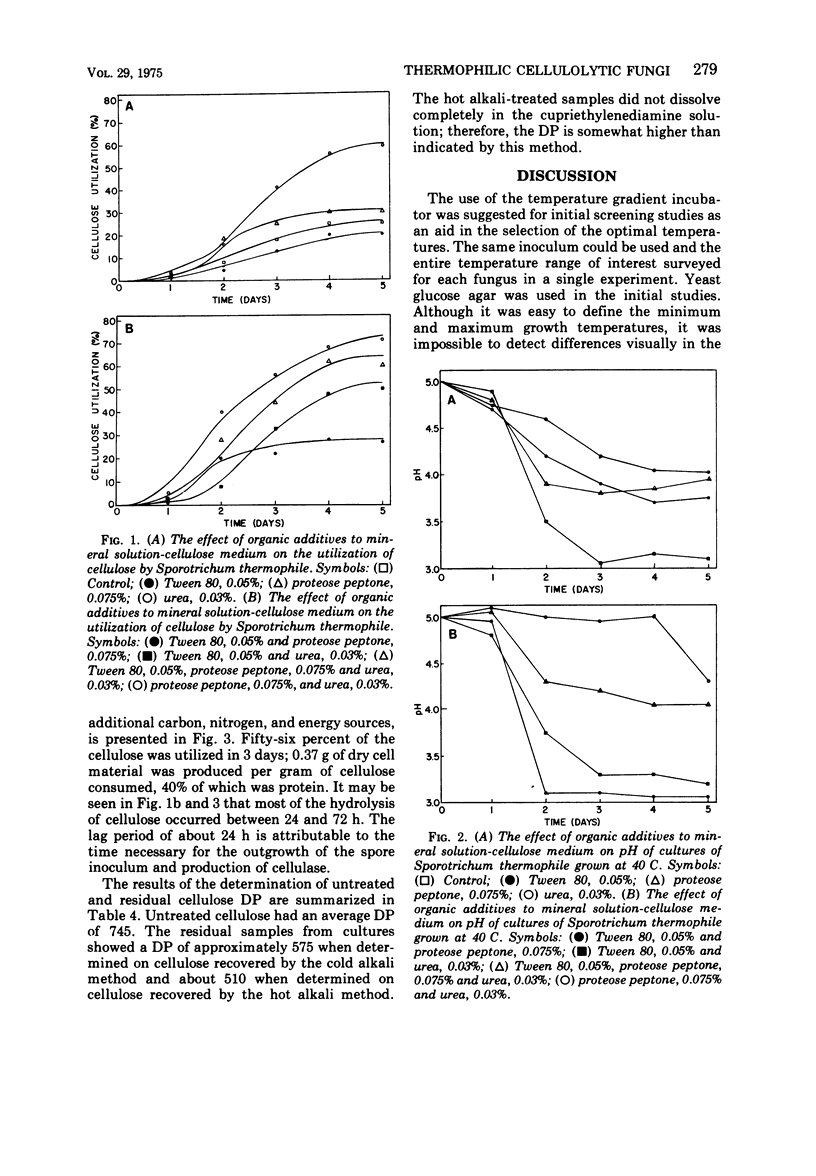
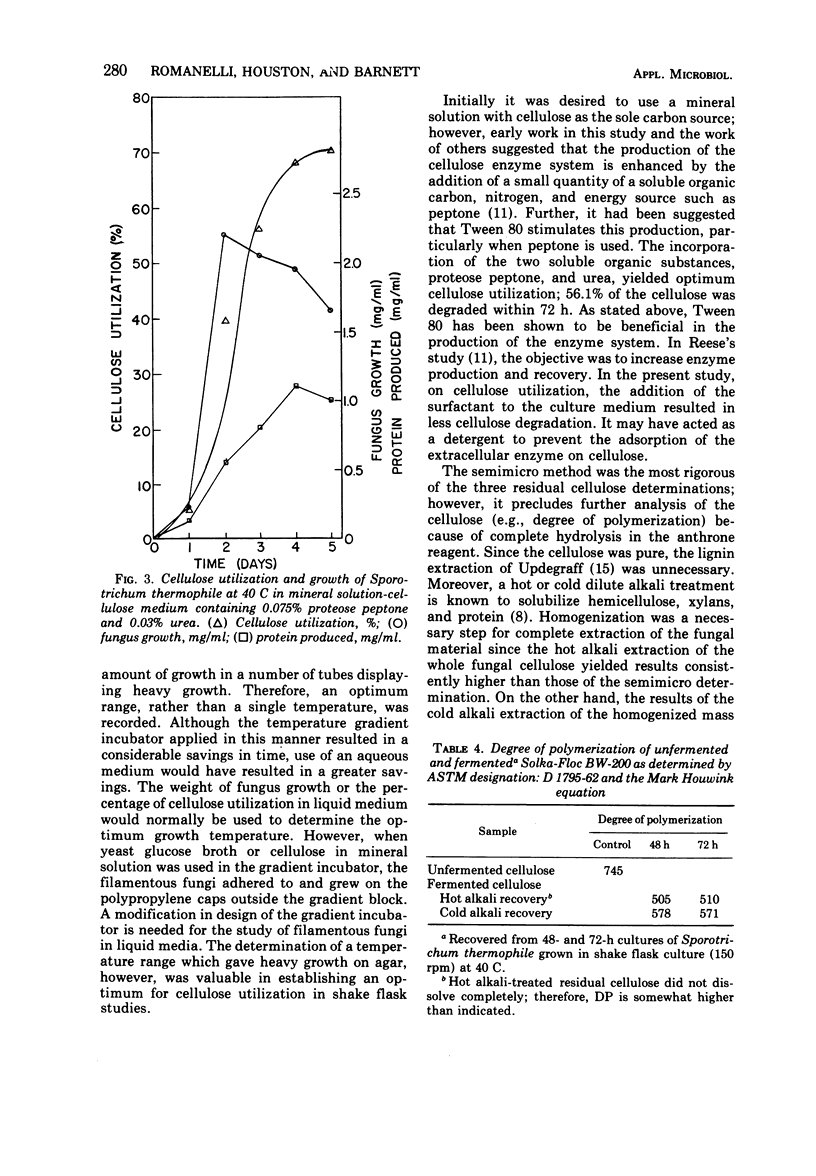
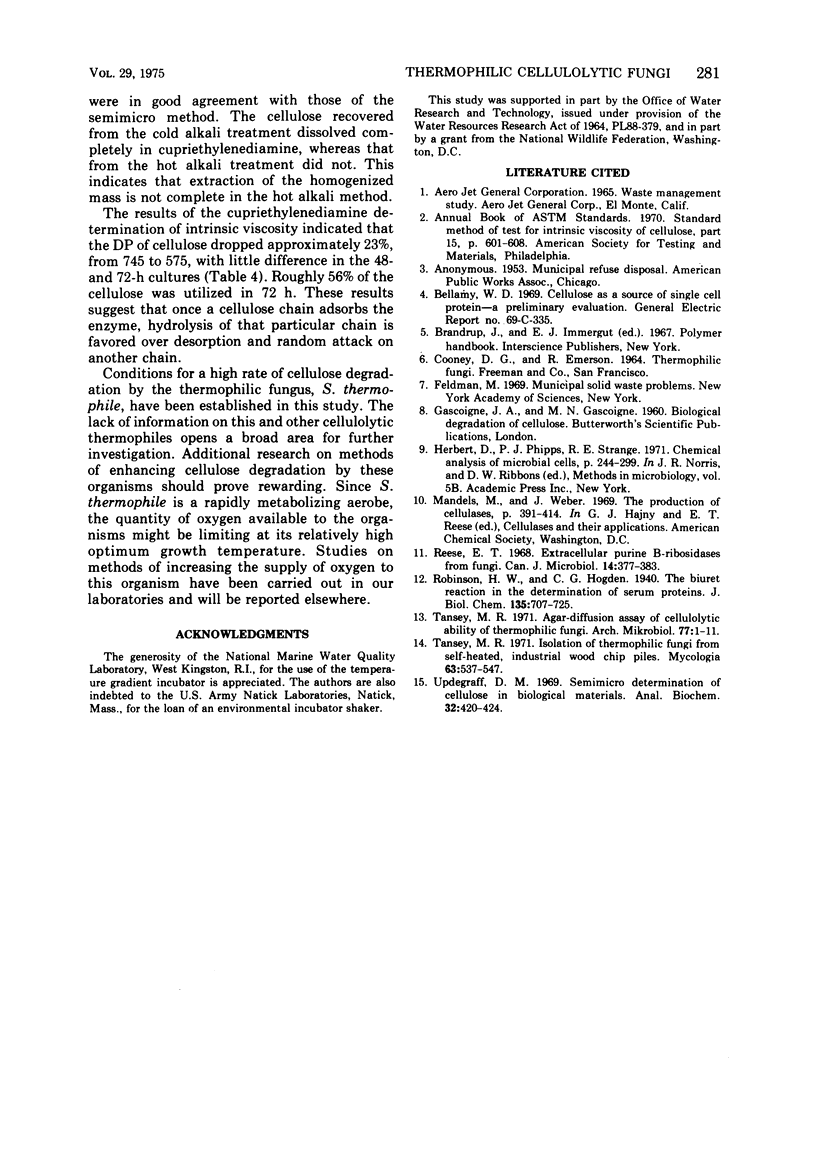
Selected References
These references are in PubMed. This may not be the complete list of references from this article.
- Reese E. T. Extracellular purine beta-ribosidases from fungi. Can J Microbiol. 1968 Apr;14(4):377–383. doi: 10.1139/m68-060. [DOI] [PubMed] [Google Scholar]
- Updegraff D. M. Semimicro determination of cellulose in biological materials. Anal Biochem. 1969 Dec;32(3):420–424. doi: 10.1016/s0003-2697(69)80009-6. [DOI] [PubMed] [Google Scholar]


